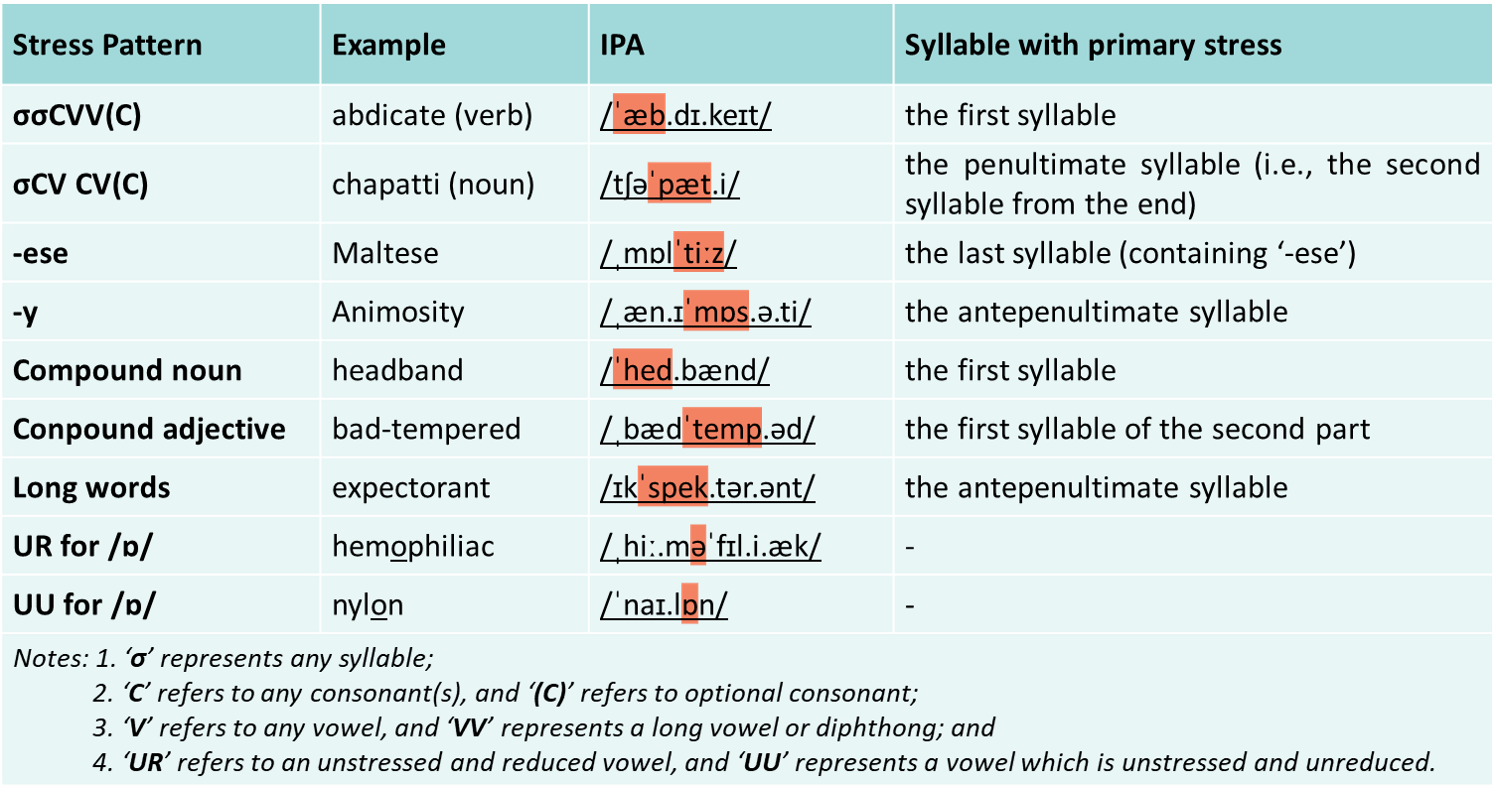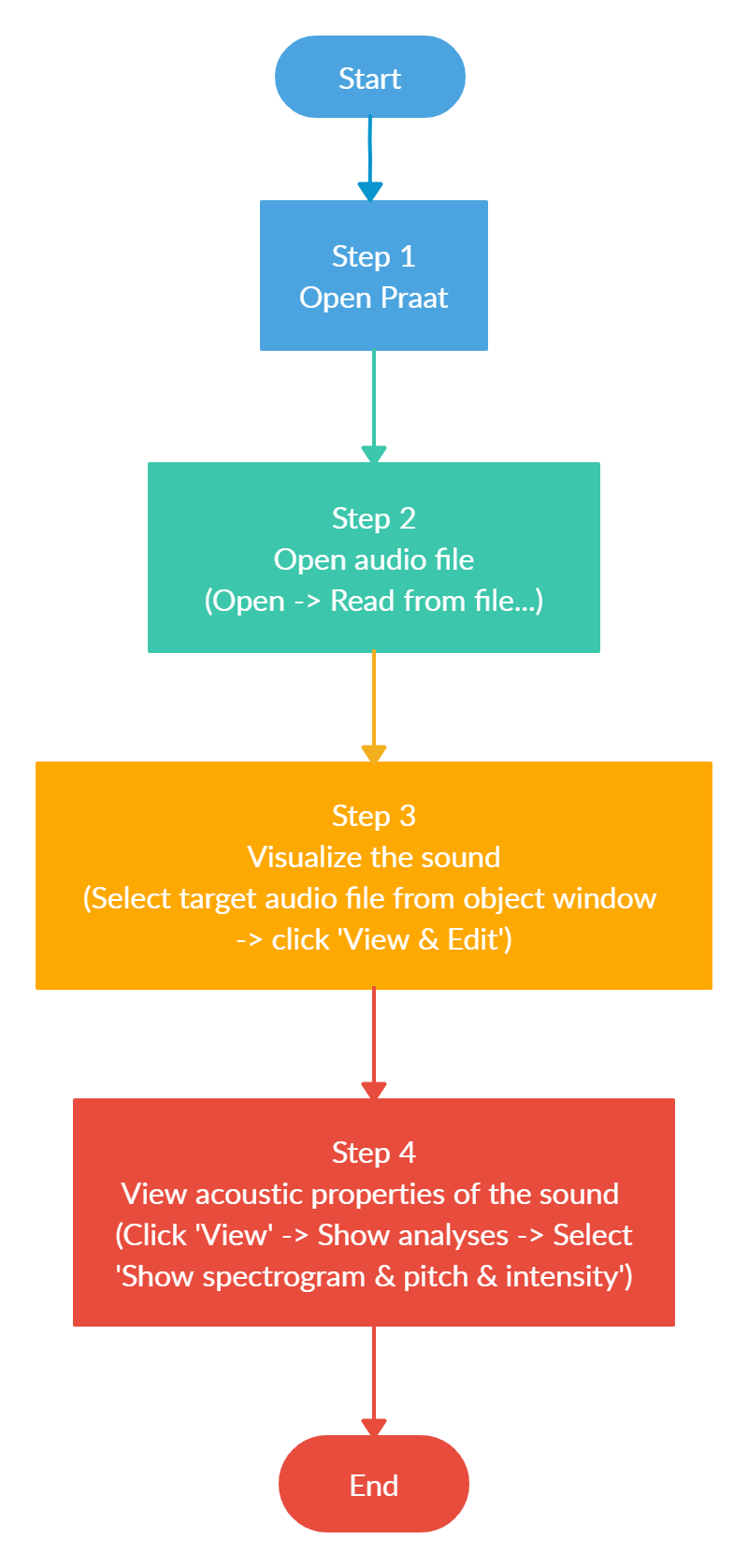
Acknowledgement Funding: This study was funded by General Research Fund (GRF) No: 18600218
Introduction to English Word Stress
About Our English Word Stress Project
It is commonly found that Chinese learners of English experience great difficulty with English word stress placement. For example, in the learner corpus ‘The Spoken English Corpus of Chinese and Non-Chinese Learners in Hong Kong’ (developed by the same research team and funded by TDG), a number of learners pronounced the word ‘accent (ACcent)’ in the sentence ‘why do people usually have an accent when they speak a second language?’ with inappropriate lexical stress (acCENT) (e.g. Speakers HK05, ML02, ML63, etc…). Such kind of stress shift has a negative effect on intelligibility. Although researchers and teachers are aware of the importance of instruction for word stress, little research has been done to examine the teachability and effectiveness of different approaches to word stress training.
Accordingly, this project aims to provide a comprehensive description of Chinese learners’ difficulties in placing English word stress and investigate the effectiveness of word stress training, by creating well-rounded assessment tasks with the focus on both production and perception and designing two training programmes from the perspectives of phonological rules and acoustic-perceptual respectively. In the phonological rule-based training programme, participants were instructed with basic concepts of English syllable, root, affixation, and normal stress rules. In the acoustic perceptual-based training, participants mainly dealt with formant, duration, fundamental frequency, and intensity measurements for primary stressed, secondary stressed, unstressed unreduced, and unstressed reduced vowels. Drawing on the concrete results from the project, we developed new teaching kits which incorporate two main types of training. All the project-related materials are provided below. In addition, we also compiled a variety of resources for teaching and learning of English word stress.
Teaching Kits
♥ Teaching tips
English word stress can be taught in a more flexible approach. It is suggested that word stress rules should be included as supplements in English classroom, despite that the rules may not be applied to all existing words. Here, we summarised a list of common word stress rules according to a number of well-known studies such as Chomsky and Halle’s (1968) and Bowler’s (2005) .
It does not mean that students need to be spoon-fed with all types of word stress rules. Alternatively, rules which are considered simple but easily confused by students can be given priority. For example, participants in the project seem to have more difficulties in acquiring words following the patterns as listed below.
After selectively teaching the rules for word stress rules, teachers can first let students follow the flowchart of decision on word stress placement (see Figure 1) to decode the primary word stress placement in the form of games. Word stress rules allow students to make relative sound prediction when encountering unfamiliar words.
Given that there are some exceptions, teachers are encouraged to adopt acoustic-perceptual instruction, which will present the word stress in an intriguing way. Instructors teach students to observe the acoustic features of pronunciation by learners and native speakers, following the procedure as shown in Figure 2. Learners, aided with the visual presentation, can gain a clear understanding of the gaps between themselves and native speakers in terms of word stress placement.
In addition, metaphonological awareness tasks can also be integrated into daily pronunciation teaching either in or off class, for students to consolidate what they have learnt. Metaphonological awareness here refers to “Metalinguistic awareness in the acquisition of third language phonology” and mainly concerns attention and noticing in the process of phonological acquisition from cognitive angles (Wrembel, 2015, p. 60). Raising metaphonological awareness has been shown to exert a positive effect on the development of L2 phonological competence (e.g. Wrembel, 2011; Chen & Han, 2020). It is worth mentioning here when performing the metaphonological awareness tasks, learners are required to follow a specific order (see Figure 3). First, they produce target features and meanwhile record their production, and then do the analytical listening tasks, and carry out self-reflection and self-repair tasks as the final procedure of the whole task.
♥ Teaching materials
(*Click HERE to get access to the training materials of each training programme)
♥ Useful websites
• Word stress rules
• Word stress exercise/quiz
References
Bowler, B. (2005). Timesaver Pronunciation Activities. Scholastic Inc
Chen, H. C., & Han, Q. W. (n.d.). The effects of metaphonological awareness training on L3 Mandarin tone acquisition by Cantonese learners. International Journal of Multilingualism, ahead-of-print(ahead-of-print), 1–20. https://doi.org/10.1080/14790718.2020.1820509
Chomsky, N., & Halle, M. (1991). The sound pattern of English. MIT Press.
Wrembel, M. (2011). Metaphonetic awareness in the production of speech. In M. Pawlak, E. Waniek-Klimczak, & J. Majer (Eds.). Speaking and instructed foreign language acquisition (pp. 169–182). Clevedon: Multilingual Matters.
Wrembel, Magdalena. (2015). Metaphonological awareness in multilinguals: a case of L3 Polish. Language Awareness, 24(1), 60–83. https://doi.org/10.1080/09658416.2014.890209
Hits: 5153














